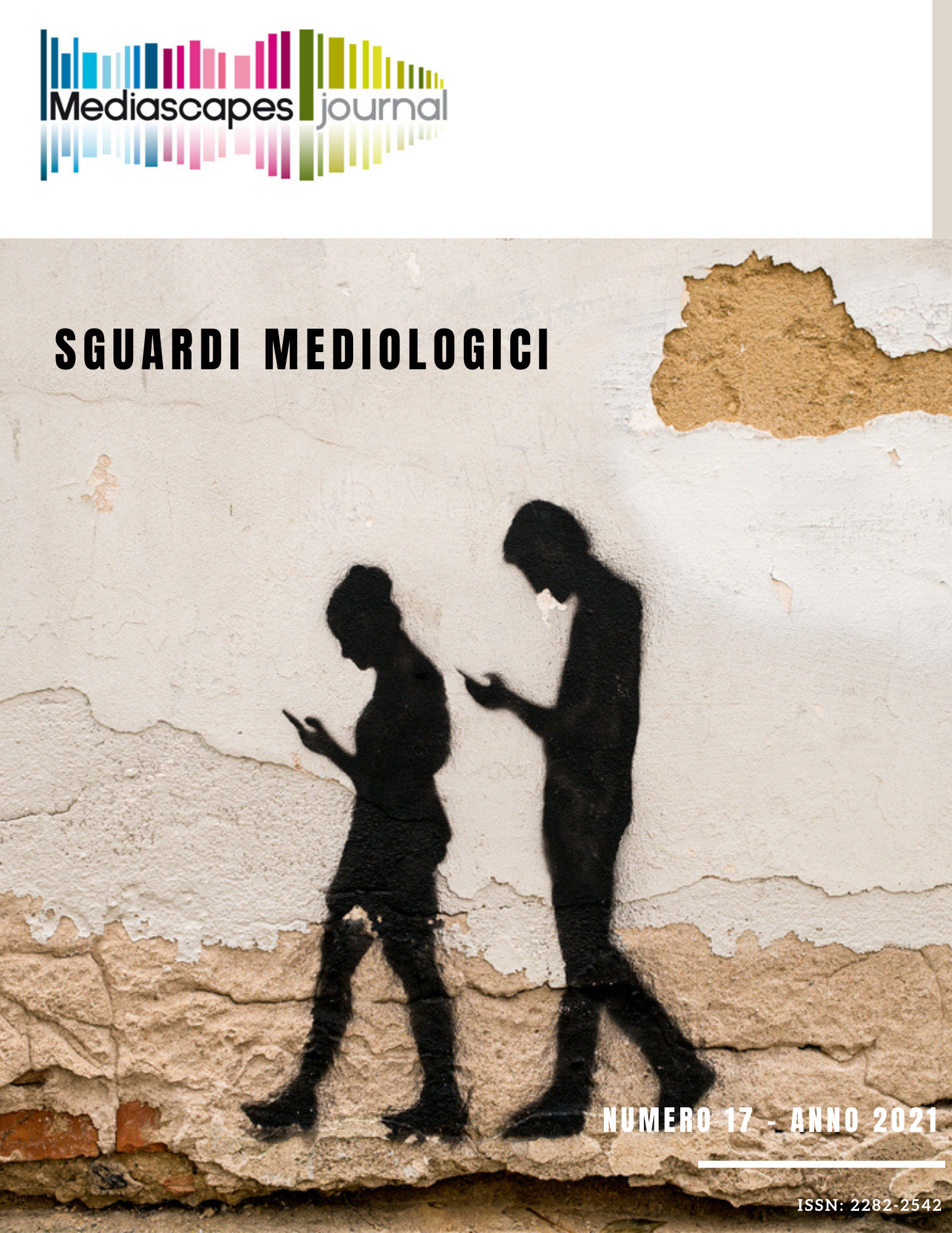Arcipelago Covid 19. Per un atlante visuale, e sociale, della pandemia
Parole chiave:
immagine, schermo, fotografia, visual studiesAbstract
Nella primavera del 2020, abbiamo vissuto una straordinaria vicinanza virtuale e relazionale negli ambienti delle nostre case digitali. L'immagine, quella che raccontava e viveva, sperimentava epidermicamente la pandemia, rompeva completamente la discontinuità tra spazi virtuali e fisici, risolvendosi in uno spazio di continuità tattile, prima ancora che audiovisivo. Il titolo di questo articolo, Arcipelago Covid 19, richiama direttamente ad una delle esperienze di digital visual storytelling nate nel marzo 2020, in piena esplosione pandemica, dalla necessità di raccontare dal vivo, coralmente e pluralmente, il nostro paese in un momento storico straordinario. Ideato da un gruppo di fotografi italiani, il progetto è incentrato sul racconto visivo e ha coinvolto un centinaio di sguardi sparsi sul territorio, convergenti negli spazi di vita sociale delle piattaforme digitali e testimoni di un fenomeno molto più ampio durante la pandemia. Gli intensi mesi di lockdown in Italia possono essere esplorati e raccontati attraverso un complesso mosaico visivo che non è più e non è solo una prospettiva mediatica mainstream, con una percezione immaginaria controllata e univoca, ma richiama ad un atlante disomogeneo, polifonico, ricollocato nella cornice di una esperienza digitale incompleta e parziale, multiprospettica, difficile da controllare. Questo saggio sceglie un approccio che utilizza principalmente i media studies e i visual studies, prendendo come punto di riferimento la storia e l'archeologia dei media.
##submission.downloads##
Pubblicato
Come citare
Fascicolo
Sezione
Licenza

TQuesto lavoro è fornito con la licenza Creative Commons Attribuzione 4.0 Internazionale.
Gli autori che pubblicano su questa rivista accettano le seguenti condizioni:
- Gli autori mantengono i diritti sulla loro opera e cedono alla rivista il diritto di prima pubblicazione dell'opera, contemporaneamente licenziata sotto una Licenza Creative Commons - Attribuzione che permette ad altri di condividere l'opera indicando la paternità intellettuale e la prima pubblicazione su questa rivista.
- Gli autori possono aderire ad altri accordi di licenza non esclusiva per la distribuzione della versione dell'opera pubblicata (es. depositarla in un archivio istituzionale o pubblicarla in una monografia), a patto di indicare che la prima pubblicazione è avvenuta su questa rivista.
- Gli autori possono diffondere la loro opera online (es. in repository istituzionali o nel loro sito web) prima e durante il processo di submission, poiché può portare a scambi produttivi e aumentare le citazioni dell'opera pubblicata (Vedi The Effect of Open Access).


